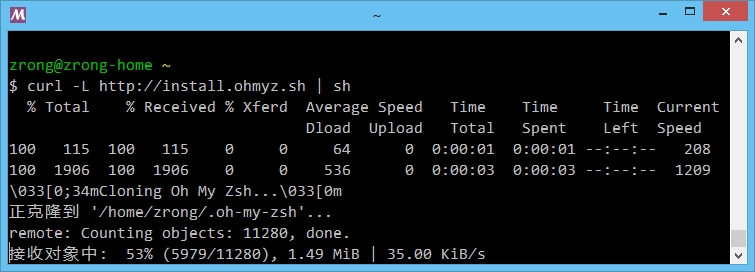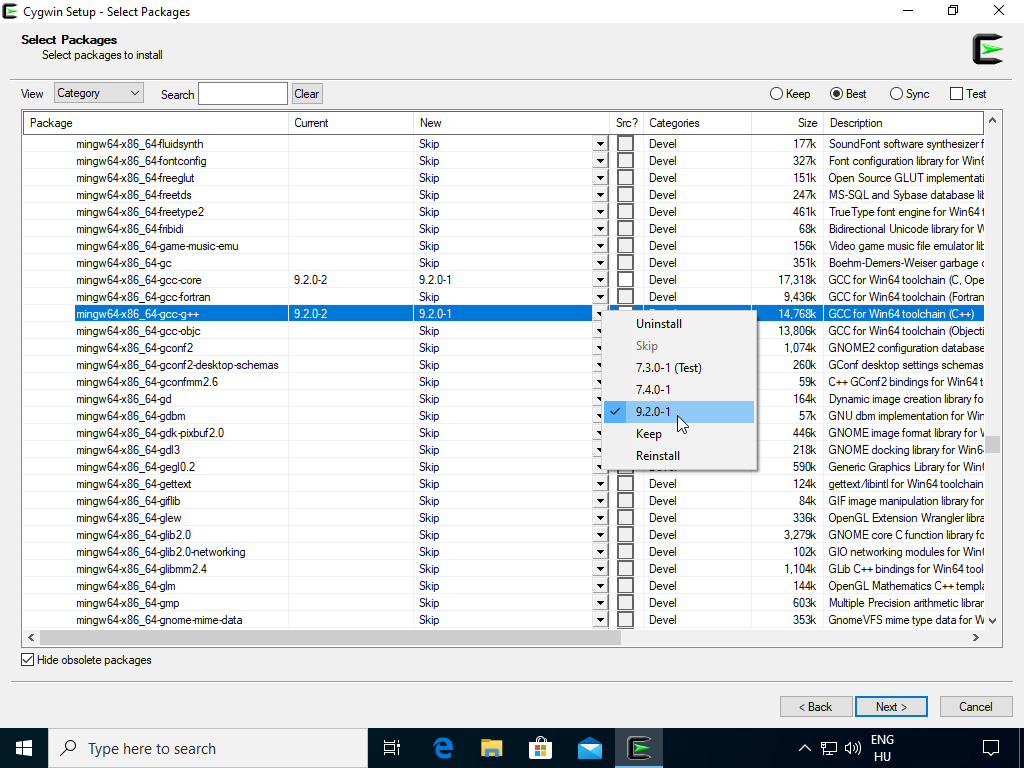

- #Mingw or cygwin install#
- #Mingw or cygwin software#
- #Mingw or cygwin download#
On command-line (for GCC), we could use option -I for include-path, -L for lib-path, and -l for library. Step 3: Configuring the Include-Path, Lib-Path and Library: We can configure on per-project basis by right-click on the project ⇒ Properties ⇒ C/C++ general ⇒ Paths and Symbols ⇒ Use "Includes" panel to configure the Include-Path "Library Paths" panel for the Lib-Path and "Libraries" panel for individual libraries. They shall be referred to as " opengl32", " glu32", " glut32" without the prefix " lib" and suffix ". Nonetheless, we need to include these libraries in linking. This directory is in the implicit library-path.
Libraries: the OpenGL library " libopengl32.a", GLU library " libglu32.a" and GLUT library " libglut32.a" are provided in the " \lib\w32api" directory. As " \usr\include\w32api" is in the implicit include-path. Headers: the OpenGL header " gl.h", GLU header " glu.h", and GLUT header " glut.h" are provided in the " \usr\include\w32api\GL" directory. #Mingw or cygwin install#
Cygwin: We need to install " gcc", " g++", " gdb", " make" (under the " Devel" category) and " opengl", " freeglut" (under the " Graphics" category). Download, unzip and copy " glut.h" to " \include\GL", " glut32.lib" to " \lib", and " glut32.dll" to " \bin" (which should be included in the PATH)) #Mingw or cygwin download#
(Alternatively, you could download Nate Robin's original Win32 port of GLUT from, which has not been updated since 2001. They shall be referred to as " opengl32", " glu32", " freeglut" without the prefix " lib" and suffix ".

Libraries: the OpenGL library " libopengl32.a", GLU library " libglu32.a" and GLUT library " libfreeglut.a" are kept in " \lib" directory.Since " \include" is in the implicit include-path. Headers: the OpenGL header " gl.h", GLU header " glu.h" and GLUT header " glut.h" (or " freeglut.h") are kept in " \include\GL" directory.ĭownload, unzip and copy header files from " include\GL" to " \include\GL" the libraries from " lib" to " \lib", and shared library from " bin" to " \bin" (which should be included in the PATH environment variable), where is the MinGW installed directory. I recommend using the pre-package version for MinGW (freeglut 2.8.0 MinGW Package) available at. MinGW: For MinGW, we need to install GLUT separately.Eclipse CDT with Cygwin or MinGW Installing Eclipse CDT / Cygwin or MinGW, OpenGL, GLU and GLUT Step 1: Setup the Eclipse CDT (C Development Toolkit) It is important to locate the directory path and the actual filename of these header files and libraries in your operating platform in order to properly setup the OpenGL programming environment.
 An optional shared library: for example, " glut32.dll" (for " freeglut.dll") for GLUT under Win32, typically kept under " bin " or " c:\windows\system32". A static library: for example, in Win32, " libopengl32.a" for core OpenGL, " libglu32.a" for GLU, " libglut32.a" (or " libfreeglut.a" or " glut32.lib") for GLUT, typically kept under " lib" directory. A header file: " gl.h" for core OpenGL, " glu.h" for GLU, and " glut.h" (or " freeglut.h") for GLUT, typically kept under " include\GL" directory.
An optional shared library: for example, " glut32.dll" (for " freeglut.dll") for GLUT under Win32, typically kept under " bin " or " c:\windows\system32". A static library: for example, in Win32, " libopengl32.a" for core OpenGL, " libglu32.a" for GLU, " libglut32.a" (or " libfreeglut.a" or " glut32.lib") for GLUT, typically kept under " lib" directory. A header file: " gl.h" for core OpenGL, " glu.h" for GLU, and " glut.h" (or " freeglut.h") for GLUT, typically kept under " include\GL" directory. #Mingw or cygwin software#
Įach of the software package consists of: GLEW provides efficient run-time mechanisms for determining which OpenGL extensions are supported on the target platform." Source and pre-build binary available at.
OpenGL Extension Wrangler Library (GLEW): "GLEW is a cross-platform open-source C/C++ extension loading library. While GLUT is well-suited to learning OpenGL and developing simple OpenGL applications, GLUT is not a full-featured toolkit so large applications requiring sophisticated user interfaces are better off using native window system toolkits. Quoting from the : "GLUT is designed for constructing small to medium sized OpenGL programs. GLUT functions start with a prefix of " glut" (e.g., glutCreatewindow, glutMouseFunc). OpenGL Utilities Toolkit (GLUT): provides support to interact with the Operating System (such as creating a window, handling key and mouse inputs) and more building models (such as sphere and torus). GLU functions start with a prefix " glu" (e.g., gluLookAt, gluPerspective) OpenGL Utility Library (GLU): built on-top of the core OpenGL to provide important utilities and more building models (such as qradric surfaces). The Core OpenGL models an object via a set of geometric primitives, such as point, line, and polygon. Core OpenGL (GL): consists of hundreds of functions, which begin with a prefix " gl" (e.g., glColor, glVertex, glTranslate, glRotate). We need the following sets of libraries in programming OpenGL: We need a C/C++ compiler, either GCC (GNU Compiler Collection) from MinGW or Cygwin (for Windows), or Visual C/C++ Compiler, or others.







 0 kommentar(er)
0 kommentar(er)
